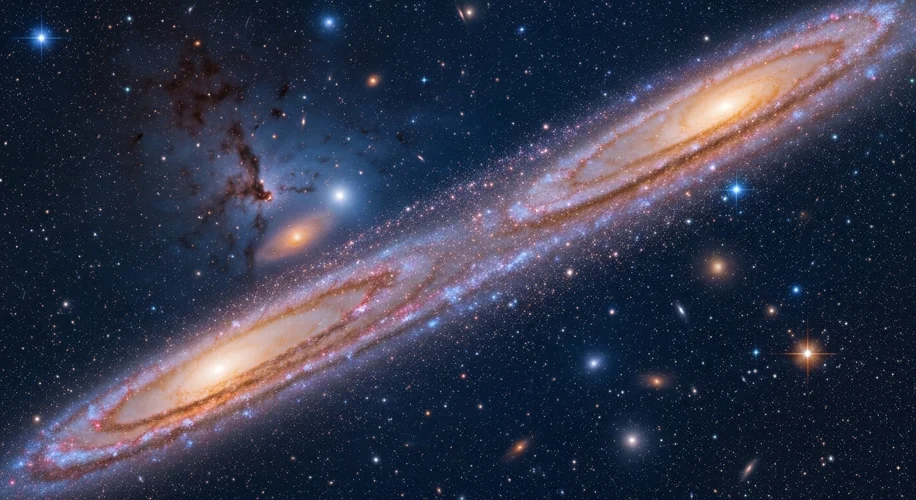Did you know that galaxies aren’t always solitary wanderers in the vastness of space? Sometimes, they interact in dramatic ways, and scientists recently captured an incredible example of this: a ‘bridge’ of stars being pulled from one galaxy to another.
Imagine two galaxies, perhaps a larger one and a smaller companion. When they get close enough, the more massive galaxy’s gravity can start to tug on the smaller one. This gravitational pull isn’t gentle; it can stretch and distort the smaller galaxy, pulling out streams of stars, gas, and dust. These stellar streams can form long, arcing structures, often referred to as ‘tidal tails’ or, in this case, a ‘bridge’ connecting the two galaxies.
This recent observation, made possible by advanced telescopes, provides a stunning visual of galactic evolution in action. It’s like seeing a cosmic Slinky in motion! The stars in this bridge aren’t just passing through; they are actively being stripped from their original galaxy and are on a journey to become part of the larger one. This process, known as galactic cannibalism, is a common way galaxies grow and evolve over billions of years.
What’s fascinating about this particular capture is the clarity with which the stellar bridge is visible. It highlights how these gravitational interactions sculpt the universe. The stars in the bridge are often older, having been flung out during the initial gravitational encounter. They form a visible link, a testament to the powerful forces at play across cosmic distances.
This phenomenon is crucial for understanding how galaxies form and change over time. It shows that the universe is a dynamic place, constantly in motion and transformation. These stellar bridges are not just beautiful sights; they are snapshots of the ongoing processes that shape the cosmos we see today. It’s a reminder that even the seemingly solid structures of galaxies are subject to immense forces and constant change.

